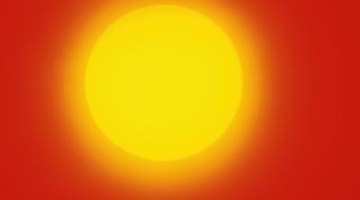Explanation of Why Placing a Damp Towel Over a Fan Will Increase Its Ability to Cool a Room
Trying to stay cool on a hot summer day is challenging, but attempting to sleep on a hot summer night can be worse. During the 1920s in the Arizona desert, a simple solution was discovered by local residents, facilitating sleep on those hot summer nights. After soaking large blankets or sheets in water, people would hang them on the inside of their screened-in porches at bedtime. Fans placed outside the screens pushed the night air through the moist cloths and into the screened-in porch, cooling the area where the home dwellers bunked down for the night.
Evaporative Cooling

Placing a moist towel in front of a whirling fan depicts an elementary example of evaporative cooling. Water is absorbed into the air whenever dry air passes over water. The water and air temperatures and vapor pressures attempt to equalize, resulting in liquid water molecules becoming gas in the air. This process uses energy to alter the water's physical state. Heat from the hot air transfers to the water's lower temperature, causing cooler air.
Humidity
Evaporative cooling works best in arid climates. Less water in the outside air results in a greater capacity for absorption of water passing through an evaporative cooling system. As the temperature rises during the hottest part of the day, humidity levels typically are at their lowest levels. Low humidity and hot temperatures provide optimum conditions for evaporative coolers to cool most efficiently. If the outside air is saturated with water in higher humidity regions, the air is unable to absorb as much water, reducing the efficiency of evaporative cooling.
Optimum Conditions
According to a chart found on the California Energy Commission's Consumer Energy Center website, optimum conditions exist for evaporative coolers when higher temperatures are coupled with lower humidity. If the outside temperature is 105 degrees with 5 percent humidity, the resulting air temperature when using an evaporative cooler will be about 74 degrees. If the humidity level rises to 40 percent with an air temperature of 105 degrees, the evaporative cooling system will only lower the temperature to around 89 degrees.
Advantages
Evaporative cooling in its simplest form of draping a damp towel in front of a whirling fan, or a more sophisticated evaporative cooling system designed to cool an entire house, are more economical than traditional air conditioners. They cost less to buy, install and operate over refrigerated air conditioning systems. Evaporative cooling also replenishes fresh air into the home and deposits much needed moisture into the homes located in arid climates.
References
Writer Bio
Mary Cockrill's education and certifications in interior design and home staging have allowed her to author numerous home-related articles. Cockrill has been a top design consultant for a renowned home store and is the owner of Starwood Home & Gifts, LLC, an interior design, decorating and home staging business. She holds a Bachelor of Science in secondary education with a comprehensive major in office administration.
Photo Credits
- Comstock/Comstock/Getty Images
More Articles



